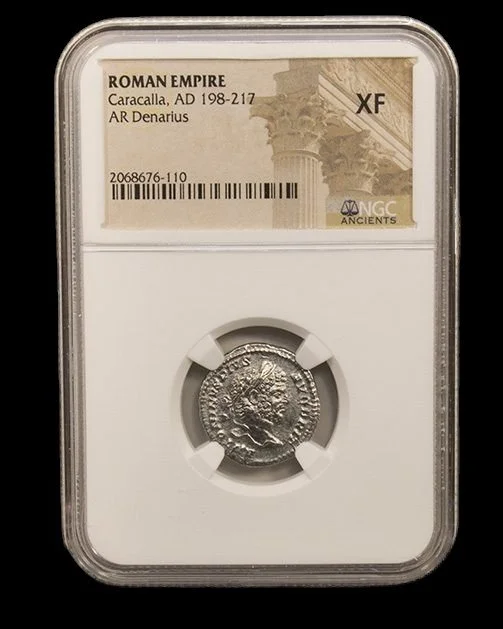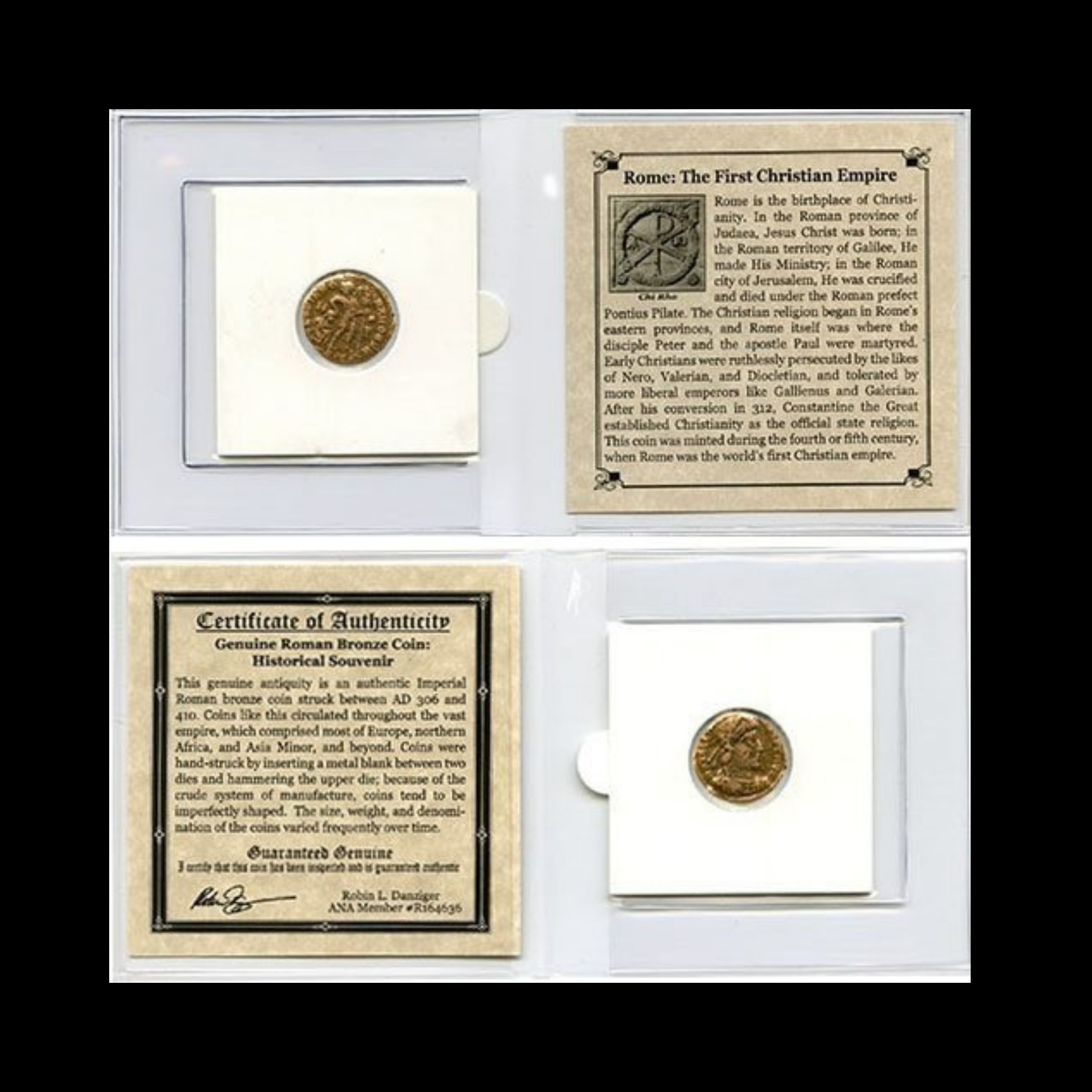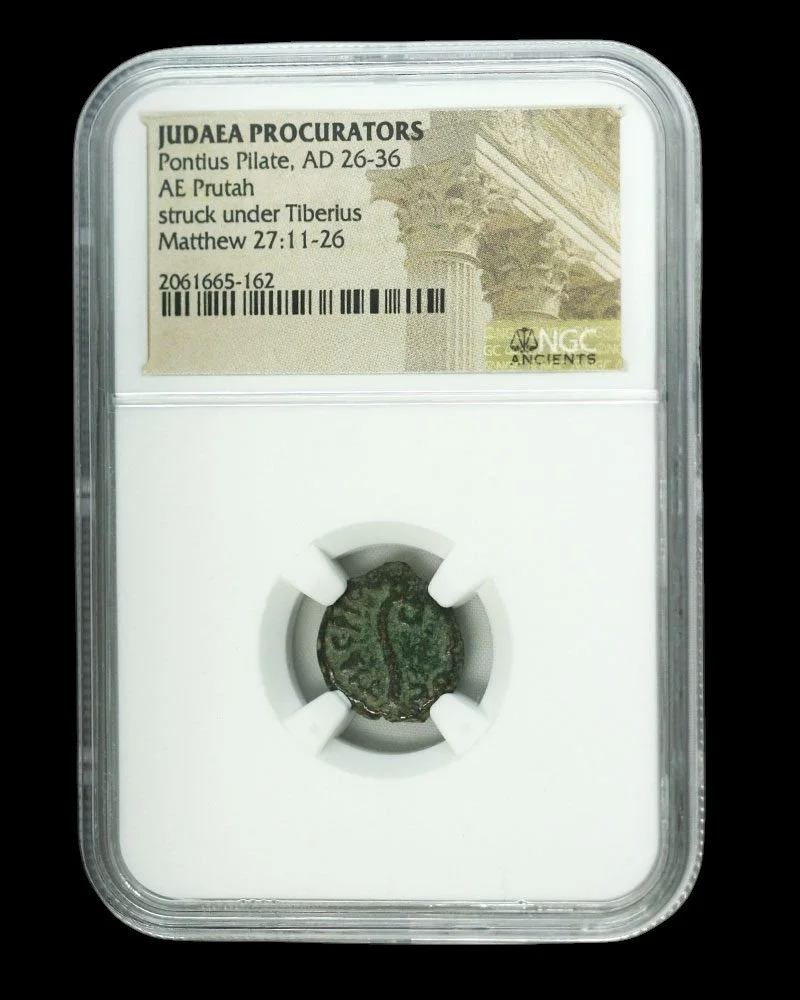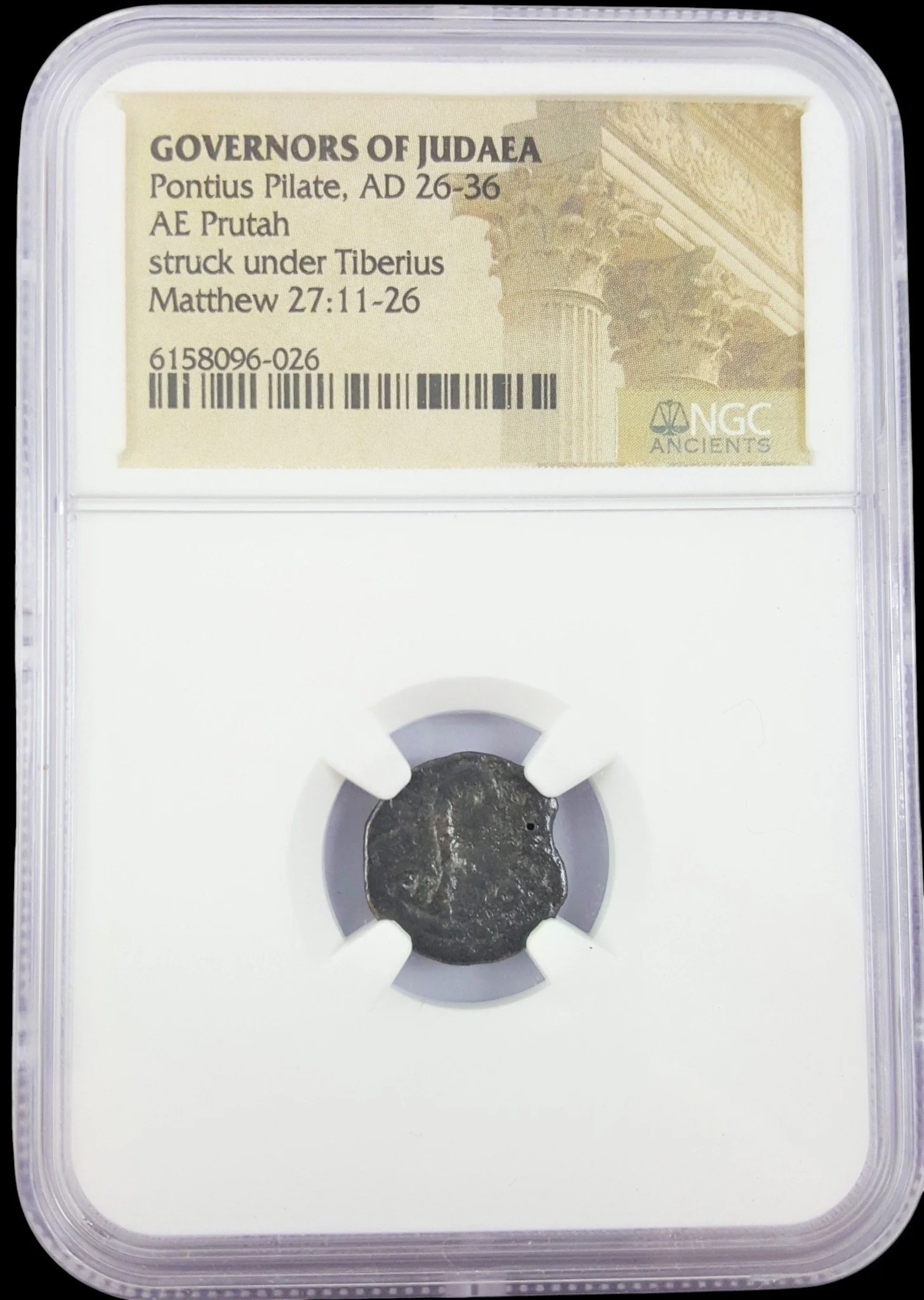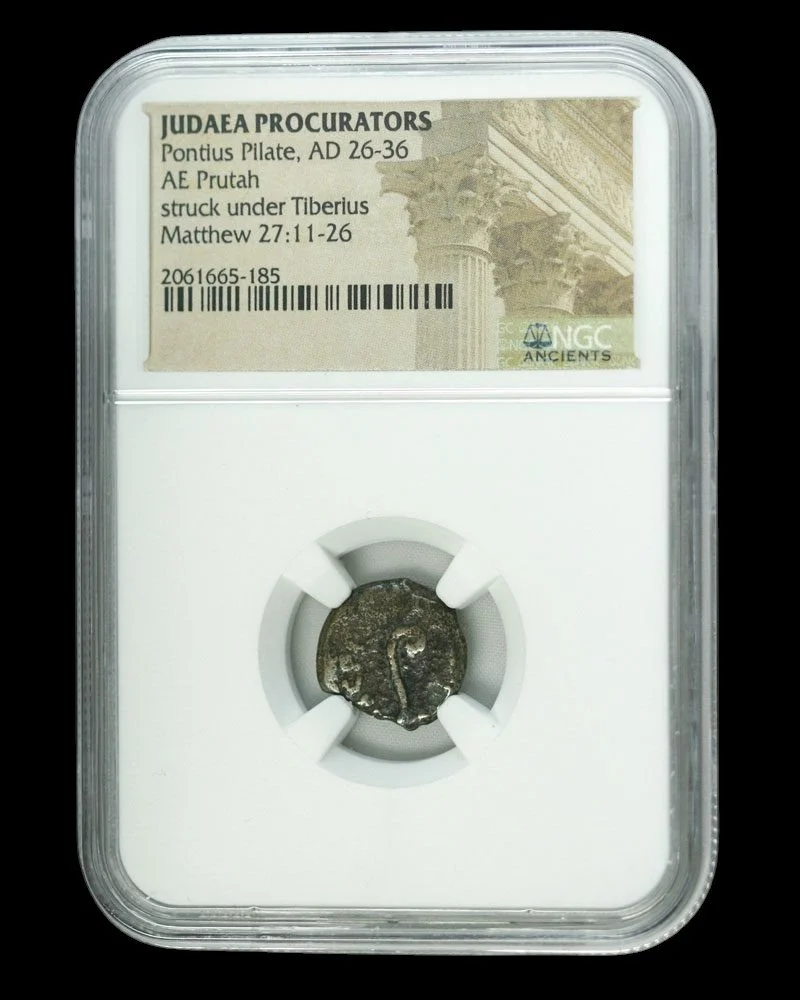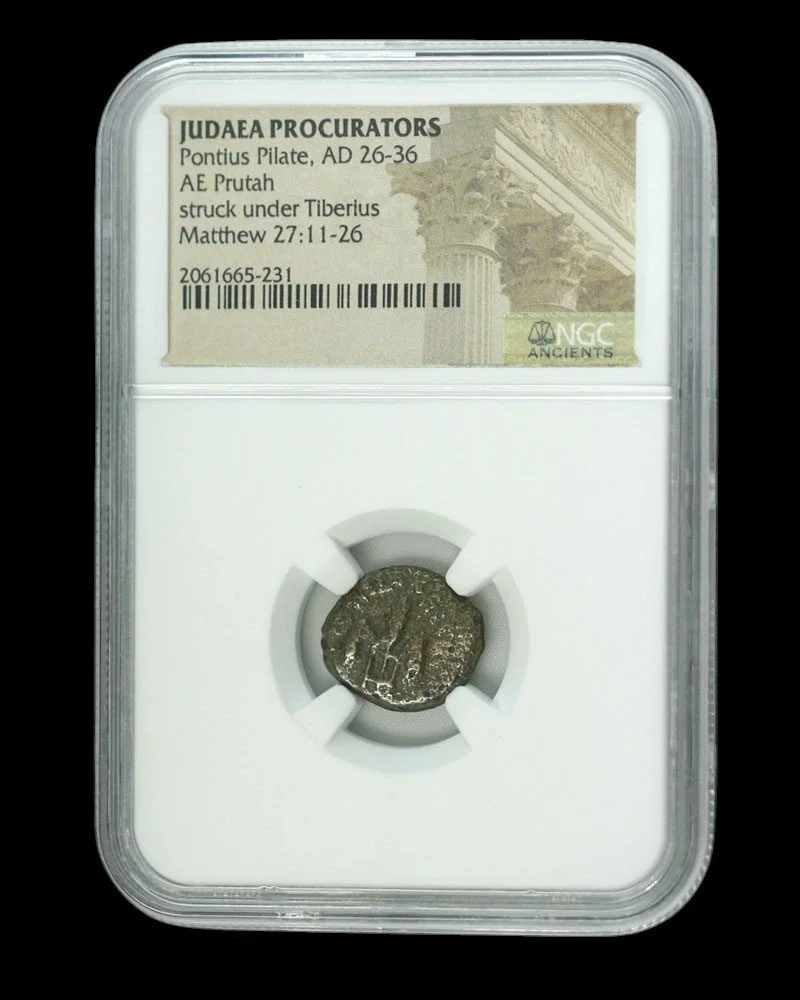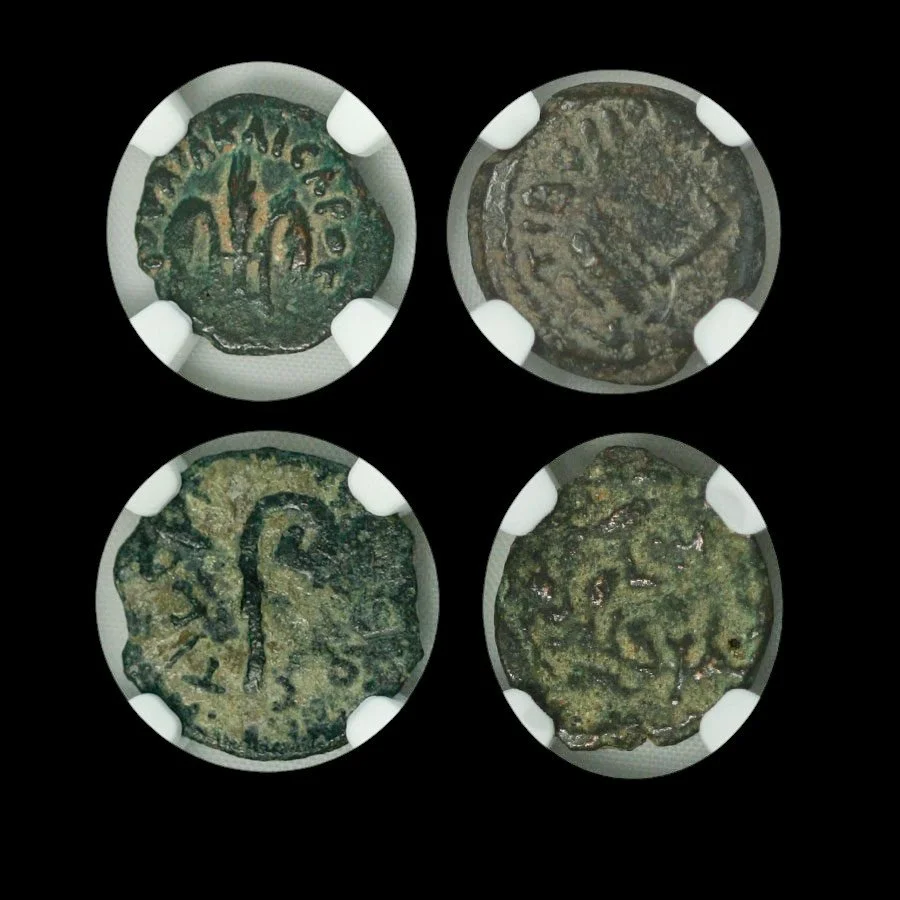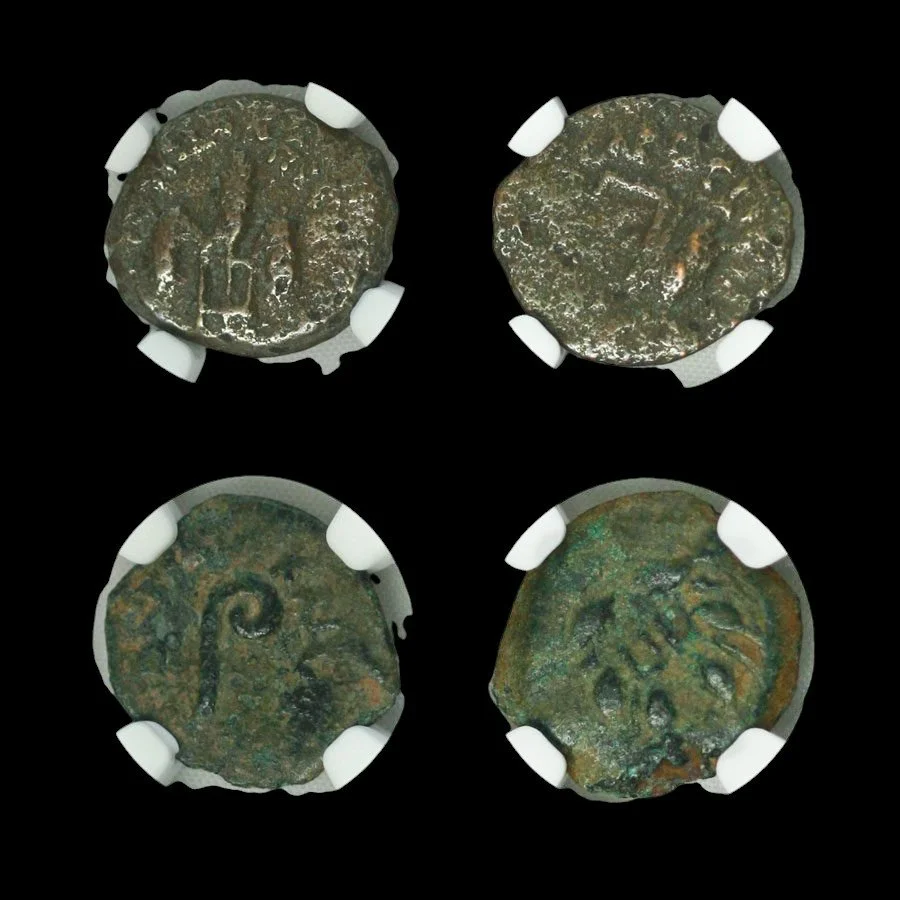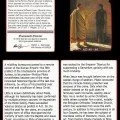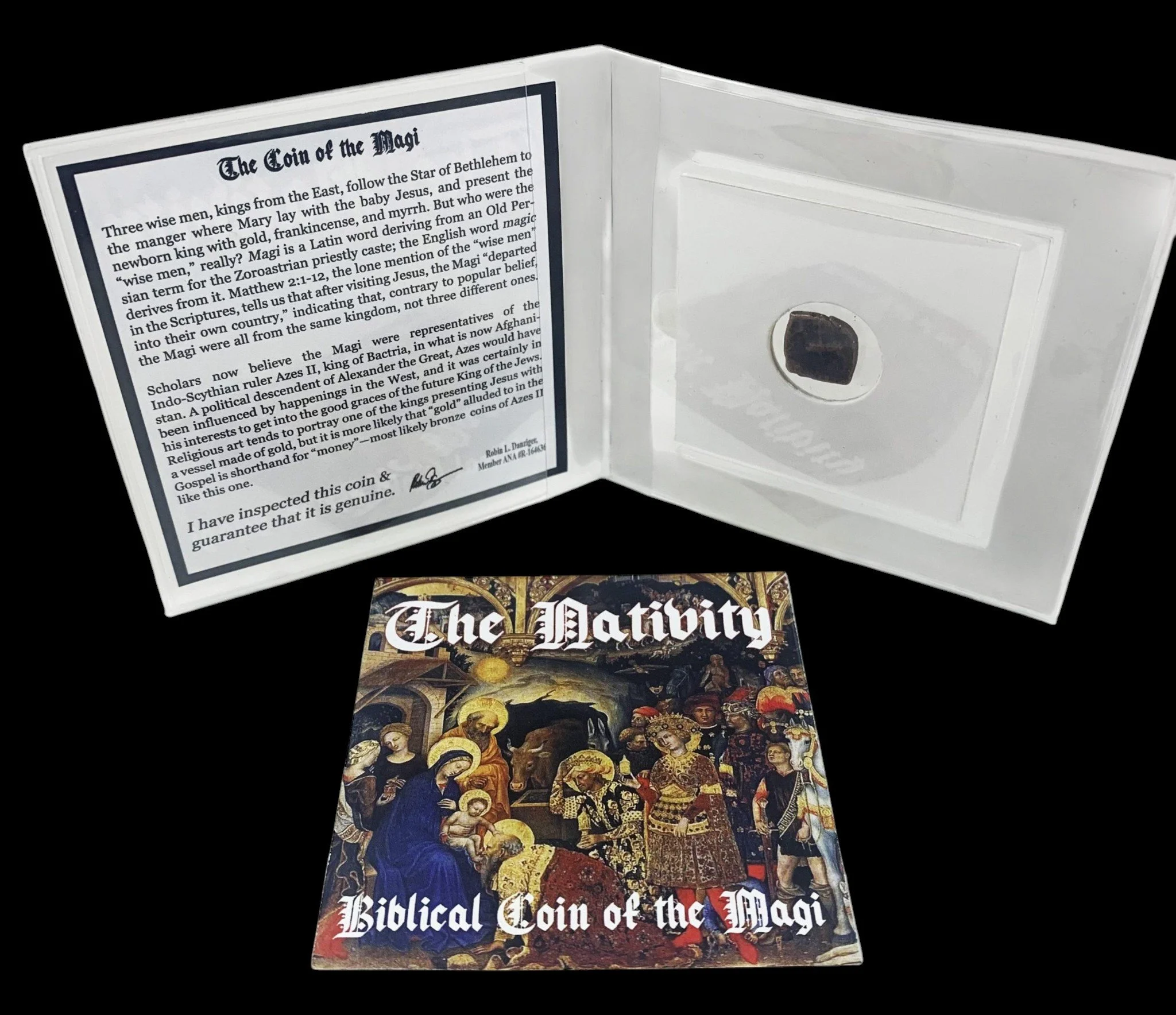 Image 1 of 3
Image 1 of 3

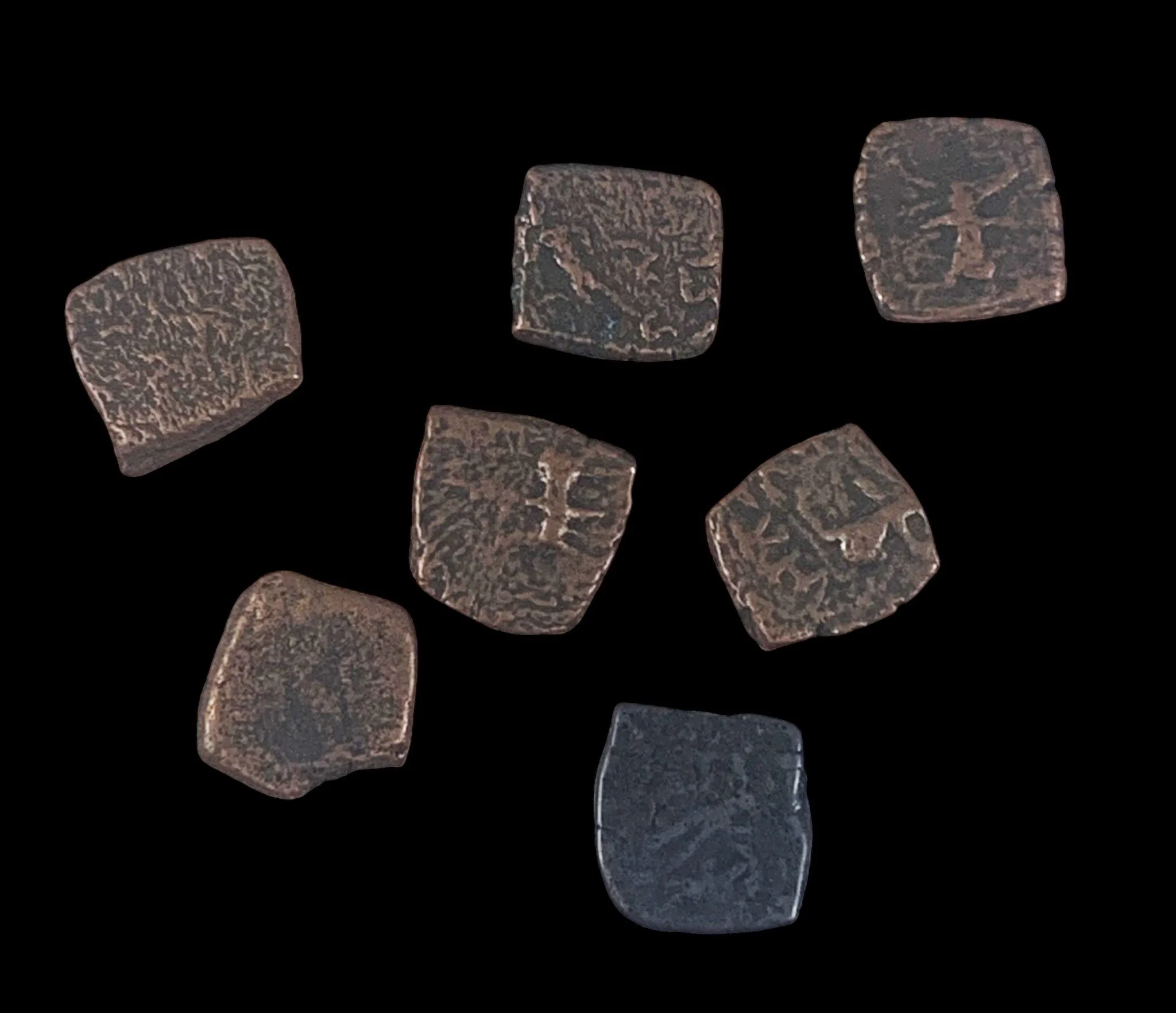 Image 2 of 3
Image 2 of 3

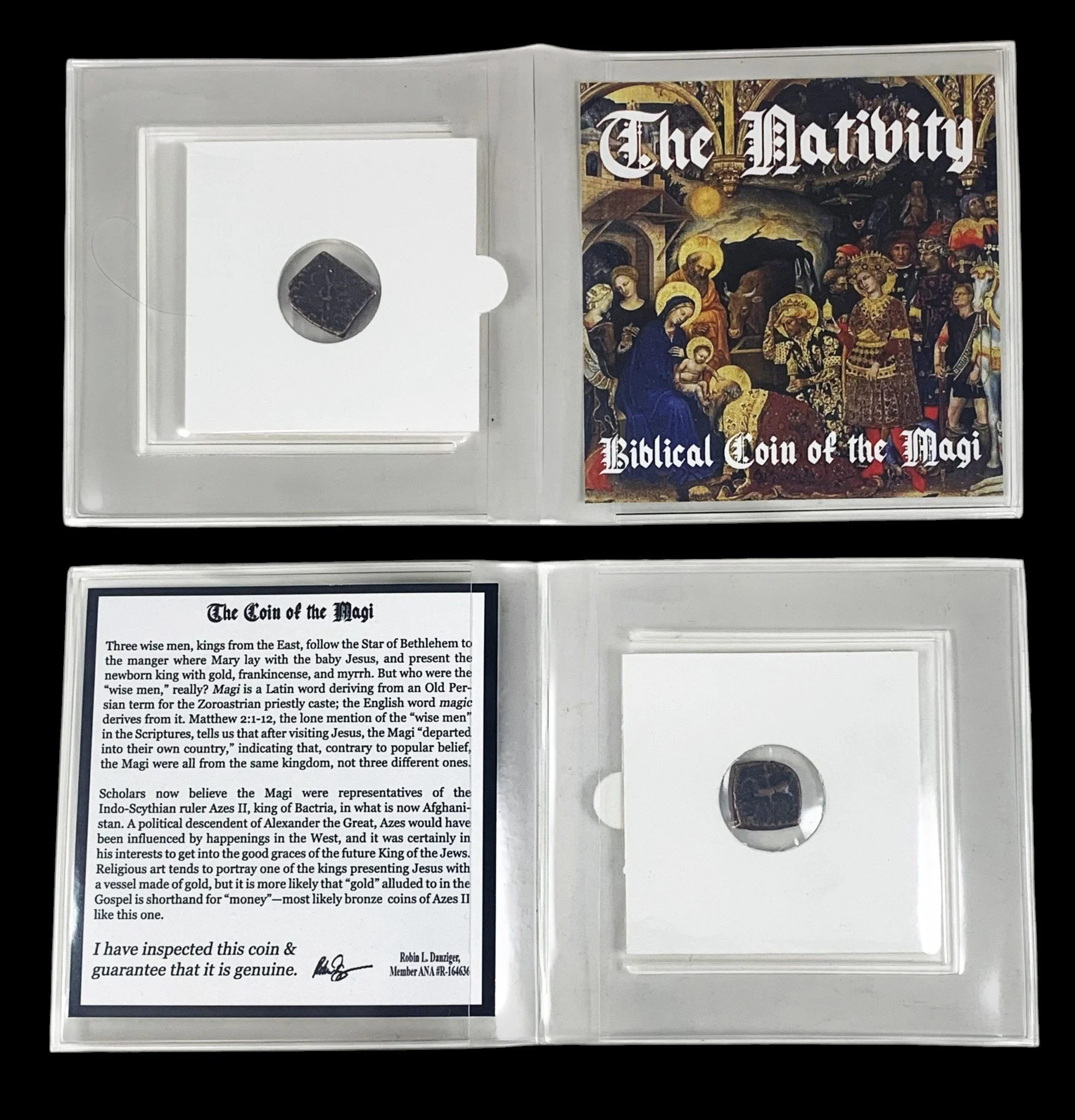 Image 3 of 3
Image 3 of 3




The Nativity: Ancient Bronze Coin from the Biblical Era of the Magi – A 2,000-Year-Old Collectible in Mini Album
This coin connects directly to the story of the Nativity and the visit of the Three Wise Men. In the Gospel of Matthew, the Magi follow the Star of Bethlehem to honor the newborn Jesus, bringing gifts of gold, frankincense, and myrrh. But who were these mysterious “wise men”?
The term Magi comes from a Persian word for the priestly caste of Zoroastrianism—where our modern word magic also originates. Far from being kings from three different lands, the Bible tells us they “returned to their own country,” suggesting they came from the same kingdom in the East.
Scholars today believe the Magi may have been emissaries of Azes II, the Indo-Scythian ruler of Bactria (modern-day Afghanistan). Azes, a political descendant of Alexander the Great, had reason to pay close attention to events in Judaea, and offering tribute to a “future King of the Jews” would have been politically useful.
While Christian art often shows one Magi presenting a vessel of shining gold, it’s possible that the “gold” mentioned in Matthew was actually money—most likely bronze coins like this one, struck by Azes II.
This coin, small and simple in appearance, carries with it one of the most meaningful connections in ancient coinage: the possibility that coins of this very type were among the first offerings laid before the infant Jesus in Bethlehem.
This coin connects directly to the story of the Nativity and the visit of the Three Wise Men. In the Gospel of Matthew, the Magi follow the Star of Bethlehem to honor the newborn Jesus, bringing gifts of gold, frankincense, and myrrh. But who were these mysterious “wise men”?
The term Magi comes from a Persian word for the priestly caste of Zoroastrianism—where our modern word magic also originates. Far from being kings from three different lands, the Bible tells us they “returned to their own country,” suggesting they came from the same kingdom in the East.
Scholars today believe the Magi may have been emissaries of Azes II, the Indo-Scythian ruler of Bactria (modern-day Afghanistan). Azes, a political descendant of Alexander the Great, had reason to pay close attention to events in Judaea, and offering tribute to a “future King of the Jews” would have been politically useful.
While Christian art often shows one Magi presenting a vessel of shining gold, it’s possible that the “gold” mentioned in Matthew was actually money—most likely bronze coins like this one, struck by Azes II.
This coin, small and simple in appearance, carries with it one of the most meaningful connections in ancient coinage: the possibility that coins of this very type were among the first offerings laid before the infant Jesus in Bethlehem.







